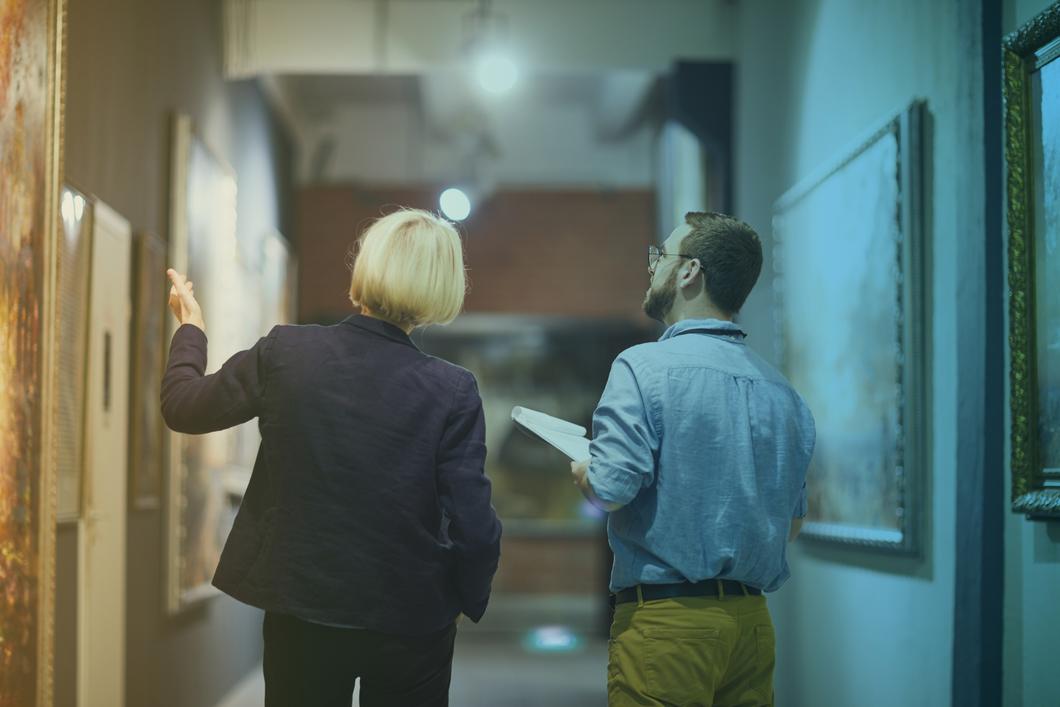Art Management – The Art of Managing Art

Collection or art management is one of the most in-demand services for art collectors whose collection has reached a certain size or level of complexity. Specialists are needed to prevent short- or long-term damage to works of art, as well as to prevent the loss of time and money. An art advisor or gallery owner will often be unable to fill this role.
Art Management is inevitably a topic that the younger generation of collectors, who increasingly buy art online, also need to address. The global art market is now open to anyone who owns a smartphone or a computer. However, those who become involved find themselves facing ever more regulations. Particular attention therefore needs to be paid to the due diligence and creating seamless documentation of transactions. Here too, an art manager can assist the collector in putting in place the right processes to ward off unpleasant surprises when an artwork is resold or passed on to an heir at a later date.
Ideally, an art manager is an art historian, registrar, curator and administrator with access to a large network of other specialists. Practical experience in handling art is just as essential as detailed expertise. Often, art managers act as confidants of the collector because they deal with highly personal and sensitive data. Trust and discretion are key values. The benefit on both sides is often a long-standing, sometimes decades-long collaboration.
By creating an inventory of the collection, the art manager lays the foundation for all the other tasks. In doing so, he or she records all the important details of a work of art, its location and its condition, and also creates complete photo documentation. Digital art databases can provide lists and reports at the touch of a button, ideal for insurance and tax purposes. Running on a smartphone or tablet, these applications allow collectors to track their collection anytime and anywhere, from their holiday villa, an art show or a gallery.
The database is an important tool, but it knows nothing about how a work of art is properly packed, how it is best transported, when it should be restored, what the proper lighting and temperature conditions are for its installation, or how it should be framed and presented. “We act like personal physicians who are responsible for the well-being, safety and survival of a work of art,” explains Birgit Gudat, Head of Art Management at KENDRIS. Continuous monitoring and documentation are required to avoid physical and also monetary losses. In particular, works of art of historical or cultural significance have a value that goes beyond the collection which currently houses them. A professional art manager will always strive to protect and preserve cultural heritage.
The role of the art manager is to anticipate and address risks relating to its condition. As a rule, he or she is helped in this by restorers, specialists and art handlers. Some works of art require regular cleaning or pest protection, for example, when they contain wood, textiles or plant elements. Others can acquire rust that needs to be removed, or the ageing process may require the replacement of complete components. This demands expertise in preservation and also in the history of art. The latter is essential when it comes to the valuation of art or its provenance research.
Financial services also find much favour with wealthy collectors. With art-backed loans, they can acquire liquidity by depositing their works of art as collateral. Such loans are offered not only by banks, but also by specialized companies and auction houses. An art manager who has experience in this highly specialized business will not only know the most important players but will also assist throughout the process with the preservation, administrative and logistical aspects.
Full art management includes many other services that each require a different type of expertise. The purchase and sale of artworks, the preparation of loan applications, the setup of trusts and foundations, or estate planning, for example, all require legal expertise, tax expertise and VAT specialists.
KENDRIS has an entire team that can assist with tailored processes for any art transaction. This reduces the risk for the collector of being exposed to fraud, forgery or loss, or of suffering reputational damage. Different skills and knowledge are needed at each stage of the collecting process. The focus at all times is on the art, for which a safe, stable and sustainable environment must be created.

